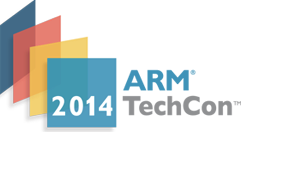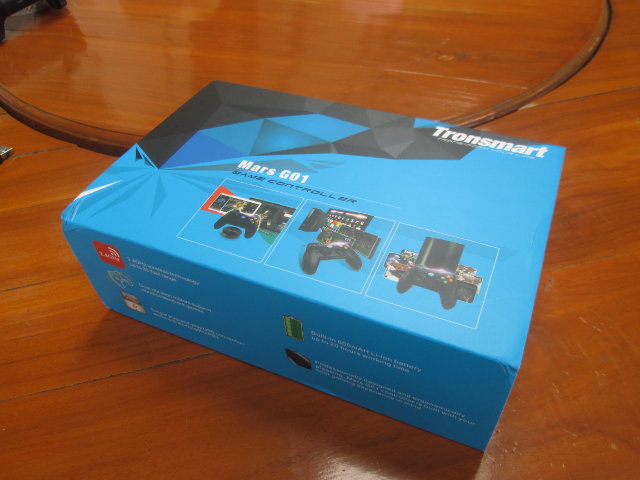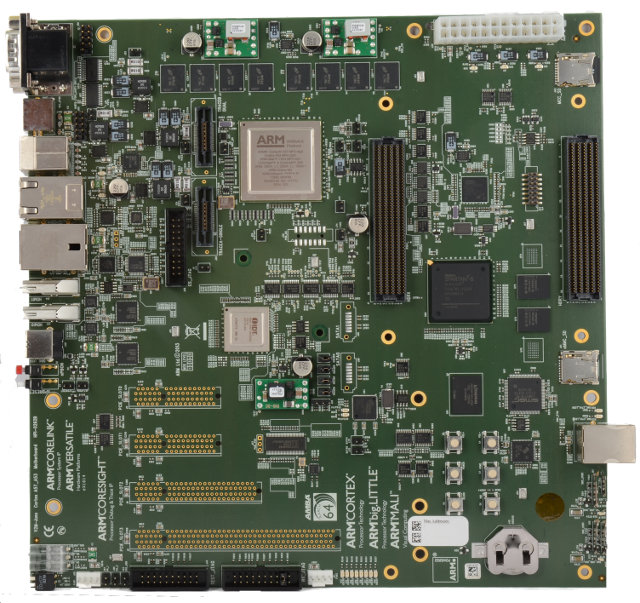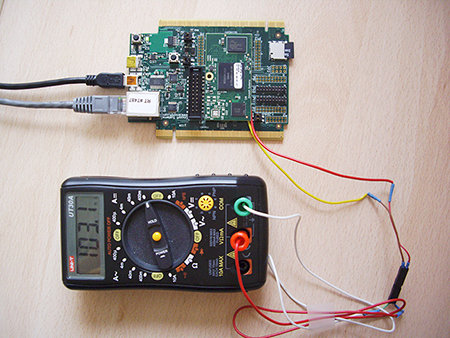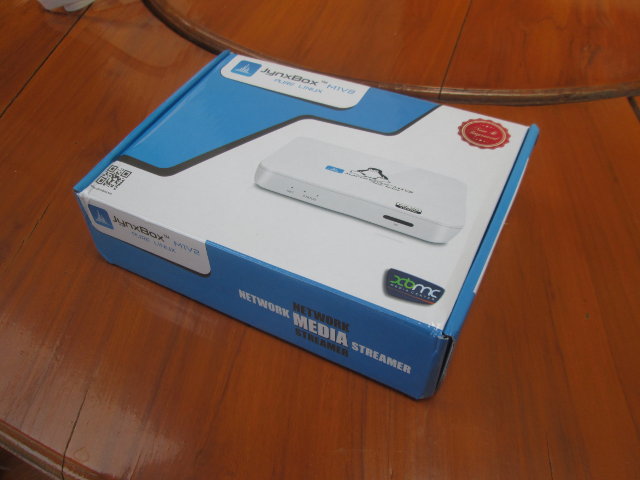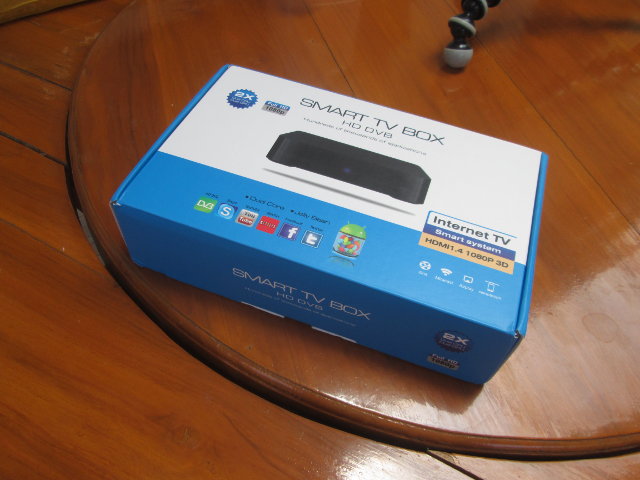ARM Technology Conference (TechCon) 2014 will take place on October 1 – 3, 2014, in Santa Clara, and as every year, there will be a conference with various sessions for suitable engineers and managers, as well as an exposition where companies showcase their latest ARM based products and solutions. The detailed schedule for the conference has just been made available. Last year, there were 90 sessions organized into 15 tracks, but this year, despite received 300 applications, the organizers decided to scale it down a bit, and there will be 75 session in the following 11 tracks: Chip Implementation Debugging Graphics Heterogeneous Compute New Frontiers Power Efficiency Safety and Security Software Development and Optimization Software Optimization for Infrastructure and Cloud System Design Verification There are also some paid workshops that take all day with topics such as “Android (NDK) and ARM overview”, “ARM and the Internet of Things”, or “ARM […]
Tronsmart Mars G01 Wireless Gamepad Review on Android
One way to play games in Android TV Box with a gamepad is to use a Sony Playstation 3 Controller with Sixaxis Controller app. It can work, but you need a device that supports Bluetooth, with the right drivers, and most games require you to do the mapping manually which is not that user-friendly. Now, they make Android compatible Bluetooth Gamepad such as G910 which seems really nice, but I’ve been told it’s rather hit or miss, and some people have problem with the Bluetooth connection. GeekBuying instead recommends Tronsmart Mars G01, based on 2.4 GHz technology, that requires an external USB RF dongle, but which alledgly does not have connection problems. It works with Android, Windows, and Playstation 3. The company sent me a sample, so I’ve taken some pictures and tried a few games with Tronsmart Vega S89 Elite TV box. Tronsmart Mars G01 Unboxing I’ve received the […]
Linaro Announces 64-bit ARM Android Port on Juno ARM Development Platform
Last week, Linaro 14.06 was released and one of the highlights was Android booting on ARMv8 models, but the organization has actually ported Android to a new 64-bit ARM platform. Juno ARM Development Platform is actually software development platform for ARMv8-A, including Juno Versatile Express board and an ARMv8-A reference software port developed by Linaro. Juno VExpress Board has the following key hardware features: SoC – 2x ARM Cortex A57 cores @ 1.1 GHz (2MB L2 cache), 4x Cortex A53 cores @ 850 MHz (1MB L2 cache) in big.LITTLE configuration with Mali-T624 GPU @ 600 MHz. Compliant with SBSA specifications Level 1. I/O FPGA – Xilinx SPARTAN-6 MCU – ARM Cortex M3 for Motherboard Configuration Controller (MCC) System Memory – 8GB DDR3L @ 1600 MHz Storage – User and configuration micro SD card lots, 64MB NOR flash, configuration EEPROM Connectivity – 10/100M Ethernet + 10M “configuration” Ethernet Video Output – […]
Low Power Mode (Suspend to RAM) in uCLinux for Freescale Kinetis K70 MCU
All ARM based micro-controllers and processors implement multiple power mode in order to save optimize power usage depending on the tasks. However, I’ve been told by some hobbyists/developers/makers that low power modes are not always implemented in Linux, especially for low cost systems either because of hardware limitations or the software is not implemented. EmCraft Systems has just released their latest embedded (uC-) Linux distributions for the MCU boards, and one of the features now available is “suspend to RAM” for their K70 SoM development kit, based on Freescale Kinetis K70 Cortex M4 MCU, which consume just around 600 to 700 uA @ 3.3V (2 to 2.3 mW) in this low power mode. They have connected a multimeter to measure the current drawn at different power modes. If you want to know all the details, you should probably read the company’s article on “Linux Low-Power Mode on Kinetis“, but I’ll […]
Jynxbox M1V2 Pure Linux XBMC Media Player Review
Theaterinabox.tv has sent me Jynxbox M1V2 TV box running XBMC Linux Gotham 13.0, and powered by Amlogic AML8726-M3 processor @ 1 GHz with 2GB Flash and 1 GB RAM. This is an upgrade of the first version featuring AML872-M1 and 512 MB RAM. I’ll go through the specs first, then show some unboxing pictures and video, and complete this post by reviewing the device by playing videos from the network and a USB flash drive, as well as going through the available add-ons in a video review. Jynxbox M1V2/M1+ Specifications Here are the specifications listed for Jynxbox M1V2 Pure Linux, aka Jynxbox M1+: SoC – Amlogic AML8726-M3 @ 1GHz with Mali-400 GPU System Memory – 1GB RAM Storage – 2GB NAND flash + micro SD card reader (up to 32GB) Video & Audio Output – HDMI up to 1080p (default: 720p) Video Codecs & Containers- MPEG 1/2/4, H.264, X264, VC-1, WMV, M2TS, TS, RMVB, […]
Unboxing of HD18T Android Media Player with DVB-T2 Tuner
Shenzhen Tomato has sent me a sample of HD18T, an Android TV box powered by Amlogic AML8726-MX dual core processor that features a DVB-T2 tuner with In and Out antenna connectors. This is quite timely as Digital TV in Thailand has just started on April 1st of this year. Today, I’ll go through the specs, unbox the device, and show some pictures of the box, the board and DVB-T2 tuner. HD18T Specifications The device enclosure and specifications are very similar to EM6-S2 DVB-S2 Android TV box I covered previously, expect the DVB-S2 tuner is replaced by a DVB-T2 tuner: SoC – AMLogic AML8726-MX dual cortex A9 @ 1.5 GHz + Mali-400MP2 GPU System Memory – 1GB DDR3 RAM Storage – 8GB NAND FLASH + SD card reader Video & Audio Output – HDMI 1.4, AV Audio Output – HDMI, AV, and optical S/PDIF. Dolby TrueHD and DTS HD pass-through. USB […]
How to Boot a Headless Linux Image on Amlogic S802 TV Boxes (Tronsmart Vega S89 Elite)
As some of you already know, I’ve been playing around with Tronsmart Vega S89 Elite, an Android TV Box powered by Amlogic S802 quad-core ARM Cortex A9r4 processor at 2 GHz. Today, I’ll show how to boot a headless Linux image on any Amlogic-based S802 TV Box from the network. The instructions can mainly be used as a starting point for developers, as it requires access to a serial terminal via UART, but if you’ve never done it before, the instructions should be easy enough to follow. Everything is loaded from the network, the kernel (via boot.img) is loaded via TFTP, and the rootfs (Linaro ALIP image) is mounted via NFS, so it’s nearly impossible to brick your device using the method provided. Linaro ALIP rootfs comes with LXDE, but at this stage, the desktop environment is not showing, even though my HDMI TV is properly detected by the drivers. […]
How to Extract a Device Tree File from Android Firmware Files
Up to now, all our cheap Android devices were based on older Linux kernel (3.0.x, 3.4.x) that still used board files (arch/arm/board, but we’ve recently seen companies like Amlogic and Rockchip release source code with Linux kernel 3.10.x. One of the key differences between these version are the move from board files to flattened device tree and multi-platform support. If it is fully implemented, a single kernel image should be able to boot multiple hardware platforms, and all low level configuration handled by the device tree file. Since I’ve connected the serial port of Tronsmart Vega S89 for debugging, and it’s a slow news day, I thought I might try to boot the Linux kernel I compiled myself, but one of the challenge was to get the device tree file. I’ll show how to extract it from the firmware. It should also be possible to get it directly from the […]


